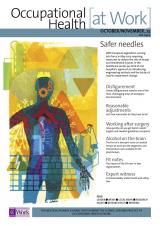October/November 2012 (vol. 09/3)
ContentsFeaturesNewsLegal
NewsResearch DigestResearch PlusCPD
Research Plus
Strenuous healthcare work predicts absence
The risk of long-term sickness absence (LTSA) – defined here as at least eight consecutive weeks off work in a one-year follow-up – increases with perceived physical exertion during healthcare work, according to a large prospective study of Danish healthcare workers. Importantly, there was a dose–response relationship. A total of 8,592 healthcare workers (97% female) were asked to rate their perceived physical activity at work on a seven point scale (from very light to extremely strenuous). Absence data was taken from the national social security register. Just over 6% of subjects had at least one period of LTSA. The strongest predictor of LTSA in the one-year follow-up was LTSA in the previous year (hazard ratio (HR) = 7.69); however, there was also a significant increased risk for every one-point rise on the physical exertion scale. Sickness absence prevalence for those doing light, moderate and strenuous physical work activity was 4.6%, 6.4% and 8.9%, respectively, with a significant does response relationship (p < 0.0001). Similar results were found for shorter absence periods (those of at least three weeks).
Scandinavian Journal of Work, Environment and Health 2012; online first: doi: 10.5271/sjweh.3310 http://www.sjweh.fi/show_abstract.php?abstract_id=3310
Occupational Health at Work October/November 2012 (vol. 09/3) pp40



